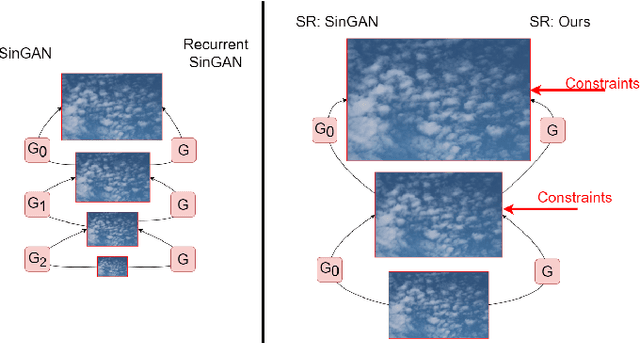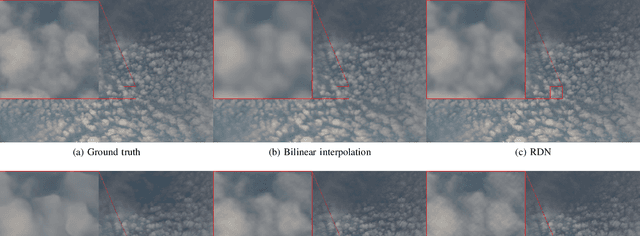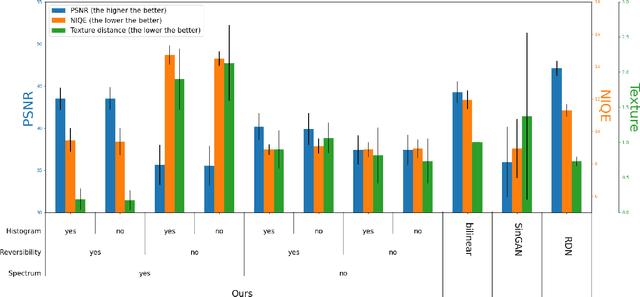Pierrick Chatillon
NIFTY: a Non-Local Image Flow Matching for Texture Synthesis
Sep 26, 2025Abstract:This paper addresses the problem of exemplar-based texture synthesis. We introduce NIFTY, a hybrid framework that combines recent insights on diffusion models trained with convolutional neural networks, and classical patch-based texture optimization techniques. NIFTY is a non-parametric flow-matching model built on non-local patch matching, which avoids the need for neural network training while alleviating common shortcomings of patch-based methods, such as poor initialization or visual artifacts. Experimental results demonstrate the effectiveness of the proposed approach compared to representative methods from the literature. Code is available at https://github.com/PierrickCh/Nifty.git
A statistically constrained internal method for single image super-resolution
Feb 03, 2023



Abstract:Deep learning based methods for single-image super-resolution (SR) have drawn a lot of attention lately. In particular, various papers have shown that the learning stage can be performed on a single image, resulting in the so-called internal approaches. The SinGAN method is one of these contributions, where the distribution of image patches is learnt on the image at hand and propagated at finer scales. Now, there are situations where some statistical a priori can be assumed for the final image. In particular, many natural phenomena yield images having power law Fourier spectrum, such as clouds and other texture images. In this work, we show how such a priori information can be integrated into an internal super-resolution approach, by constraining the learned up-sampling procedure of SinGAN. We consider various types of constraints, related to the Fourier power spectrum, the color histograms and the consistency of the upsampling scheme. We demonstrate on various experiments that these constraints are indeed satisfied, but also that some perceptual quality measures can be improved by the proposed approach.
A geometrically aware auto-encoder for multi-texture synthesis
Feb 03, 2023Abstract:We propose an auto-encoder architecture for multi-texture synthesis. The approach relies on both a compact encoder accounting for second order neural statistics and a generator incorporating adaptive periodic content. Images are embedded in a compact and geometrically consistent latent space, where the texture representation and its spatial organisation are disentangled. Texture synthesis and interpolation tasks can be performed directly from these latent codes. Our experiments demonstrate that our model outperforms state-of-the-art feed-forward methods in terms of visual quality and various texture related metrics.
History-based Anomaly Detector: an Adversarial Approach to Anomaly Detection
Dec 26, 2019



Abstract:Anomaly detection is a difficult problem in many areas and has recently been subject to a lot of attention. Classifying unseen data as anomalous is a challenging matter. Latest proposed methods rely on Generative Adversarial Networks (GANs) to estimate the normal data distribution, and produce an anomaly score prediction for any given data. In this article, we propose a simple yet new adversarial method to tackle this problem, denoted as History-based anomaly detector (HistoryAD). It consists of a self-supervised model, trained to recognize 'normal' samples by comparing them to samples based on the training history of a previously trained GAN. Quantitative and qualitative results are presented evaluating its performance. We also present a comparison to several state-of-the-art methods for anomaly detection showing that our proposal achieves top-tier results on several datasets.
 Add to Chrome
Add to Chrome Add to Firefox
Add to Firefox Add to Edge
Add to Edge